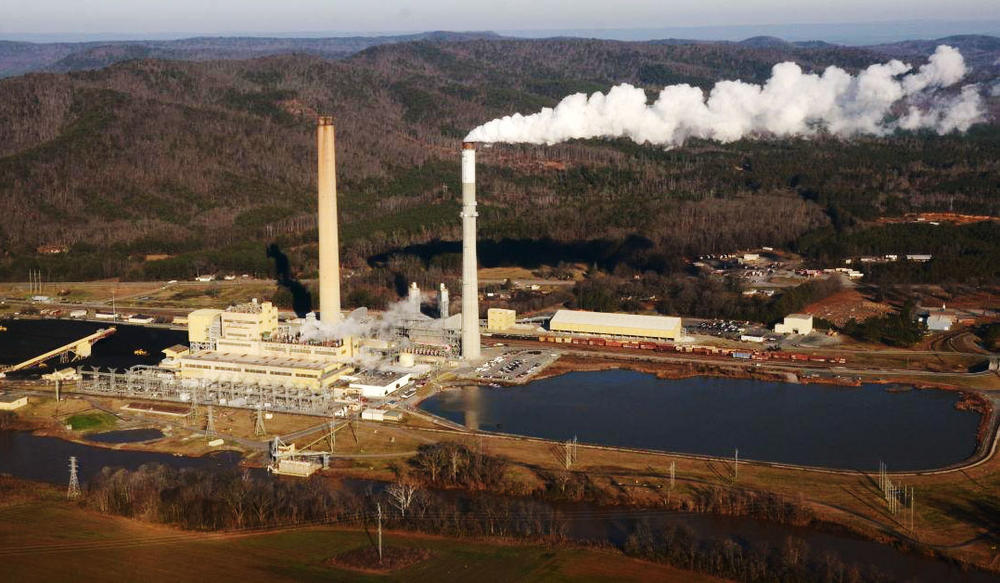
Caption
Georgia Power's Plant Hammond is shown in an undated photo. The company seeks to close the third coal ash pond at the Rome, Ga.-based plant, which has been generating electricity since the 1950s.
Credit: Rome News-Tribune

Georgia Power's Plant Hammond is shown in an undated photo. The company seeks to close the third coal ash pond at the Rome, Ga.-based plant, which has been generating electricity since the 1950s.
Georgia’s Environmental Protection Division appears poised to approve a storage plan that would allow the toxic material left over from burning coal to generate electricity, so-called coal ash, to remain potentially in the path of an underground aquifer feeding the Coosa River in Northwest Georgia.
The plan is a draft permit issued to Georgia Power as the company seeks to close the third coal ash pond at its Plant Hammond in Rome, which has been generating electricity since the 1950s. Closure permits from the EPD for the other two ash ponds at the plant require the utility to move coal ash to lined storage.
The draft plan for Ash Pond 3 spells out capping the pond with a combination of earth and water impermeable layers but leaving the bottom of the pond unlined and potentially in contact with an underground aquifer.
Environmentalists have long sought to make removal of coal ash to lined landfills the only remedy available to Georgia Power as it closes ash ponds. Currently the utility only proposes to remove coal ash from just under half of the 25 ash ponds it will eventually close around the state.
Moving all coal ash to lined storage similar to what is found in municipal landfills could be expensive, though. At the ash pond at Plant Scherer near Juliette alone, switching from cap in place to removal could run into the billions of dollars.
"Saving Juliette" follows people living adjacent to Georgia Power's Plant Scherer as they look for answers about what the plant's coal ash pond may mean for the water they drink.
Coal ash contains a number of heavy metals and other toxicants which, at high enough concentrations, can cause everything from neurological disorders to cancers. That’s why the draft permit for Ash Pond 3 at Plant Hammond includes provisions for sinking monitoring wells into the aquifer running through the ash pond to ensure material does not leak out in concentrations that exceed regulatory limits.
The monitoring plan became strengthened between Georgia Power’s original submission and the draft permit, at the request of the EPD. However, for environmental advocates like Coosa Riverkeeper Jesse Demonbreun-Chapman, any coal ash material flowing into local water is unacceptable.
“Over 1 million tons of coal ash are going to be left unlined and constantly interacting with groundwater,” Demonbreun-Chapman said. “This permanent closure plan would mean allowing a steady stream of toxins from [the ash pond] to the Coosa River and Weiss Lake downstream for decades to come.”
The permit process for closing Ash Pond 3 at Plant Hammond is not yet over. A public hearing on the permit is set to be held over Zoom at 6 p.m. Aug. 10.
Written comments on the plan will be accepted by the EPD at epdcomments@dnr.ga.gov until Sept. 8. Emailed comments must include the facility name, in this case “Plant Hammond,” and “CCR Permit” in the subject line.
The entire draft permit and related documents can be found here.
